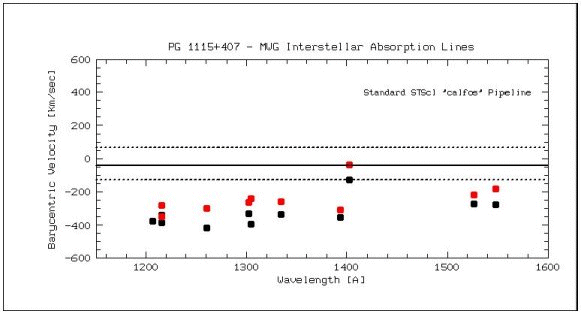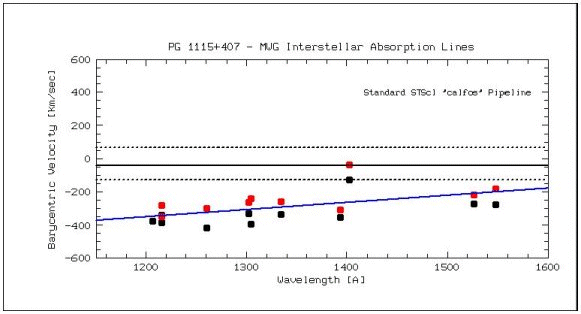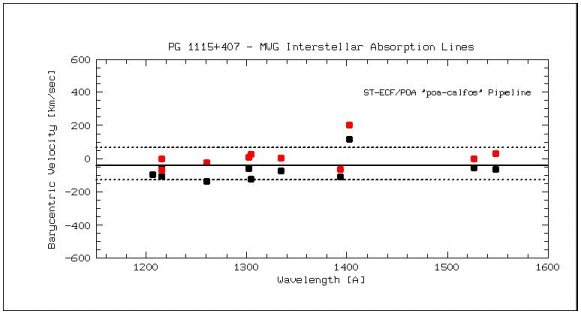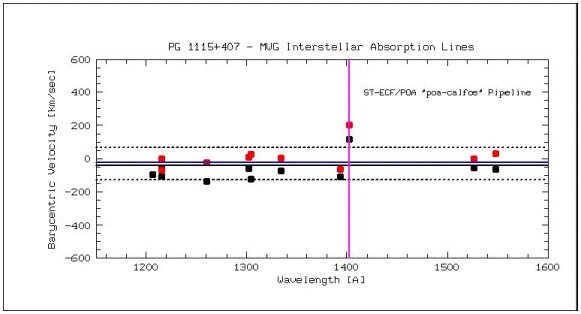Here's an example which demonstrates the effect of the improved dispersion relation. We looked at the interstellar absorption lines imprinted on the spectrum of a low red-shift quasar (PG 1115+407, PI B. Wills). There were two separate FOS observations red and black dots. All measurements have been reduced to barycentric velocities but has not been corrected for orbital motion of the HST. The solid line is the weighted average of HI 21 cm line observations with the dashed lines indicating the range of velocities found in the line of sight. We thank E. Murphy for providing these data prior to publication.
As shown for wavelength calibration data POA_CALFOS restores the zero points of the wavelength calibration to the original (design) uncertainty level of ± 1 pixel, or 50 km/sec. All data were affected by the drifts, and in particular FOS/BLUE data obtained late (towards 1996) into the FOS operational life. Very significant changes can therefore be expected for the scientific interpretation of FOS/BLUE from the late period. A remark on 'proprietorship' Below we discuss the outcome of such a test. Although all of the FOS data are public domain we have refrained from publishing here the data set name or the target name until the original PI has had a chance to digest and evaluate the impact on his publications. We have analyzed in detail a data set taken in RAPID READOUT mode with the G130H grating on the FOS/BLUE channel over a period of 40 minutes, thereby generating approximately 80 individual spectra in time sequence. The raw data were first subjected to the 'getref' utility to obtain up to date calibration reference file information. They were then subjected to the standard 'calfos' pipeline and to our 'poa_calfos' pipeline. Several bright and isolated emission lines were fitted with gaussians to obtain radial velocity information. No correction for HST orbital velocities (max 7 km/sec) nor to the heliocenter / barycenter reference frame (max 30 km/sec) where made since we did not want to show absolute velocities here (see 'proprietorship' remark).

This plot amply demonstrates that for this particular dataset the radial velocities will be about 200 km/sec more negative when re-calibrated with poa_calfos. The slight curvature in both, the original 'calfos' product (black symbols) and in the current version of 'poa_calfos' (red) is the error in the on-board de-GIMP procedure. The released'poa_calfos' versions only correct to the nearest integer pixel shift (see 'Handbook Update'). However, users may use the 'pfos_pix2wav' task in the IRAF STPOA package to find the sub-pixel correction applicable to and resulting wavelength for a table of pixel positions from any given FOS BLUE observation.
POA | ESA | NASA | ST-ECF Archive | ESO | ST-ECF | STScI | Search
|




![[STECF HOME]](/logo/stecfwhite.gif)